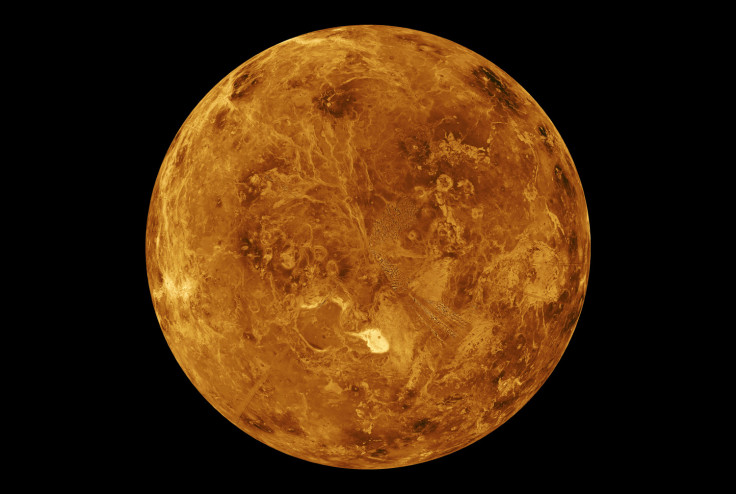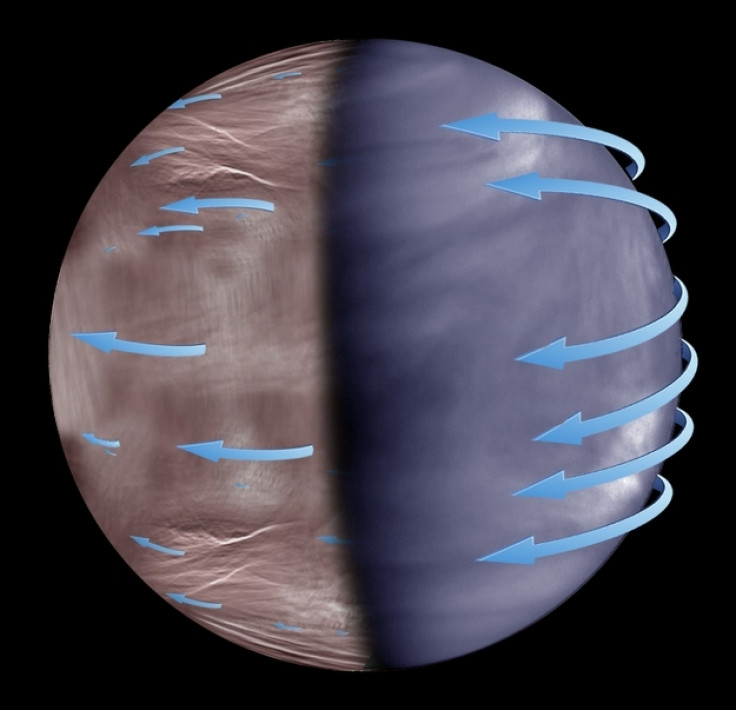Venus' mysterious dark side revealed as astronomers make surprising discovery about the planet
The swirling Venusian winds and atmosphere are even more powerful and chaotic in the constantly shadowed night side of Venus.

Astronomers have made a surprising discovery about the mysterious dark side of Venus. For the first time ever, atmosphere of the night side of the planet, which is constantly hidden from the Sun, was analysed. And, the research revealed surprising results.
Scientists using data from ESA's (European Space Agency) Venus Express, determined that the atmosphere on Venus' night side is very different from the atmosphere on the day side. Scientists found the planet's shadowed side exhibited previously-unseen cloud types. The new study also revealed that the swirling Venusian winds and atmosphere, that is characteristic to the planet's Sun-lit side, is actually even more powerful and chaotic in the constantly shadowed night side of the planet.
"This is the first time we've been able to characterise how the atmosphere circulates on the night side of Venus on a global scale," says Javier Peralta of the Japan Aerospace Exploration Agency (JAXA), Japan, and lead author of the new study. "While the atmospheric circulation on the planet's dayside has been extensively explored, there was still much to discover about the night side. We found that the cloud patterns there are different to those on the dayside, and influenced by Venus' topography."
Venus' atmosphere is dominated by highly strong winds that swirl around the planet stronger than the rotation of the planet. This phenomenon, known as "super rotation" sees Venusian winds rotating up to 60 times faster than the planet.
"We focused on the night side because it had been poorly explored; we can see the upper clouds on the planet's night side via their thermal emission, but it's been difficult to observe them properly because the contrast in our infrared images was too low to pick up enough detail," Peralta added.
Scientists used VITRIS (Visible and Infrared Thermal Imaging Spectrometer) aboard the Venus Express spacecraft, which captured hundreds of images of Venus at various wavelengths. The data revealed by VITRIS challenges the current theories of Venus' atmosphere. Previous theories suggested that super-rotations occurred in the same way in both the day and night side of the planet. However, the new study found that super-rotation is actually much more chaotic and irregular on the dark side.
"Stationary waves are probably what we'd call gravity waves–in other words, rising waves generated lower in Venus' atmosphere that appear not to move with the planet's rotation," says co-author Agustin Sánchez-Lavega of University del País Vasco in Bilbao, Spain. "These waves are concentrated over steep, mountainous areas of Venus; this suggests that the planet's topography is affecting what happens way up above in the clouds."
Although thermal emissions from Venus' upper atmosphere has previously hinted at the movement of the uppermost clouds in the planet's atmosphere, what happened at lower levels of the atmosphere still remained a mystery.
VIRTIS enabled us to see these clouds properly for the first time, allowing us to explore what previous teams could not–and we discovered unexpected and surprising results," said Peralta.
"This study challenges our current understanding of climate modelling and, specifically, the super-rotation, which is a key phenomenon seen at Venus," said Håkan Svedhem, ESA Project Scientist for Venus Express. "This is a significant result for VIRTIS and for Venus Express, and is very important for our knowledge of Venus as a whole."
The study has been published in the journal Nature Astronomy.

© Copyright IBTimes 2024. All rights reserved.






